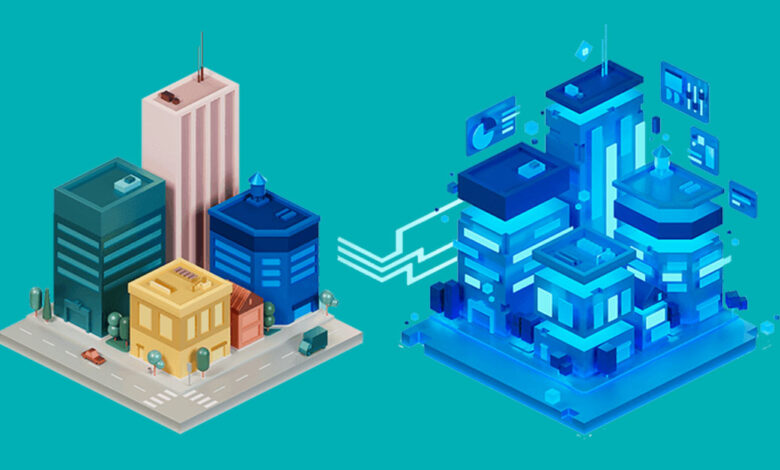
Digital Twins in a Nutshell: What Is It?
A digital twin is essentially a virtual or cyber version of any physical object, system, or process. The methodology works by copying a physical object or process so that it simulates the functioning of the object or process in real-time. In this manner, people can monitor, analyze, and improve how things function through their virtual version.
First, the idea of digital twins came in 2002 when Dr. Michael Grieves proposed the concept. The concept grew with the latest technologies such as IoT, AI, ML, and cloud computing. The technology will help the digital twin in gathering data, finding patterns to improve real-world system performance.
How Do Digital Twins Work?
Physical Object: This can be anything from a car, machine to a manufacturing process, which is to be digitally twinned.
Digital Twin: A virtual model of the physical object created based on data captured through sensors and equipment.
Data Interface: Sensors installed on the physical object stream information to the digital model around the clock, refreshing it to behave just like the natural object.
The information exchange at this level enables digital twins to mimic natural performance. A given wind turbine’s digital twin, in this regard, will, therefore, be able to foresee failure and warn the engineers in advance.
Types of Digital Twins:
Product Twins:
They are built for physical products, such as cars or industrial machinery. They help manufacturers predict performance.
Process Twins:
Caters to the processes, such as a factory line, to facilitate smoothing of operations by finding inefficiencies.
System Twins:
They model large systems, such as a transport network in a city or an electrical grid, ensuring everything works well.
Component Twins:
This type of twin focuses on the smaller parts of major systems. As an example, a component twin can be designed to track only the engine of a car.
Practical Applications of Digital Twins:
As has been said earlier, digital twins are useful across many industries:
Manufacturing:
Digital twins monitor machines and processes, predict failures, reduce downtime spent on repairs.
Healthcare:
Digital twins create virtual patients as a testbed for treatments. They also monitor medical equipment for performance enhancement.
Smart Cities:
Digital twins manage traffic flow, energy consumption, and waste for increased efficiency and sustainability.
Automotive:
Most car manufacturers make use of digital twins to test vehicle designs without investing too much time and money in prototypes. They are also enablers for the development of autonomous cars.
Energy:
Wind turbines and other forms of power plants make use of digital twins to keep a close eye on production for further optimization. This reduces equipment failure, thereby saving costs with consistent power.
Benefits of Digital Twins:
Predictive Maintenance: Digital twins can predict equipment failures and allow problems to be fixed before they are problems that cost a great deal and cause considerable downtown.
Efficiency: They provide identification of inefficiencies and optimization of processes in organizations for better resources utilization and cost-cutting.
Risk Management: Via simulation in various scenarios, digital twins let business pre-test solutions to avoid real problems from occurring.
Faster Time-to-Market Development: Digital twins accelerate product testing and reduce the need for expensive prototypes, thus accelerating development.
Challenges of Digital Twins:
Data Security: The digital twins work on real-time data coming from the systems; therefore, it becomes very crucial to safeguard this information from cyber-attacks or unauthorized access.
High Investment Cost: Creating a model for the digital twin is expensive. Companies need to invest money in IoT devices, cloud storage facilities, and other developed computing systems, which not every business can afford.
Difficulty: Most of the organizations are finding it difficult to implement digital twins due to their technological advancement and the requirement for highly efficient experts who can operate them, which most of the outdated organizations cannot afford.
The Future of Digital Twins:
With the advancement in trends like:
AI and Machine Learning: Their advancement will make digital twins more predictive and capable of decision-making.
5G Networks: Increased internet speed and reliability will, in turn, enhance the digital twin’s ability to process information at increased rates, therefore giving accurate real-time simulations.
Sustainability: Digital twins reduce waste, save energy, and minimize carbon footprints, hence can be useful in combating climate change.
Conclusion:
Digital twins are changing the game by bringing real-time data, predicting any problem in advance, and boosting efficiency. Cost and security are some of the challenges thrown up, yet its benefits cannot be denied. As technology evolves, the role of digital twins in shaping the future of businesses, cities, and industries worldwide becomes ever more important.




